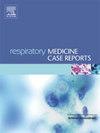A three dimensional printed endobronchial stent for the treatment of a broncho-esophageal fistula
IF 0.7
Q4 RESPIRATORY SYSTEM
引用次数: 0
Abstract
Broncho-esophageal fistulas (BEFs) are a rare but serious complication that can occur after esophagectomy, often resulting in aspiration, respiratory issues, and infection. Management depends on fistula size and location, with options including conservative treatments, surgical closure and stenting. Conventional treatment involves esophageal stents, which may be insufficient for larger or more complex fistulas. This case report describes the first use of a 3D-printed airway stent in combination with an esophageal stent to treat a broncho-esophageal fistula. A 70-year-old patient with distal esophageal adenocarcinoma, treated with neoadjuvant chemoradiation, underwent robot-assisted minimally invasive esophagectomy. The procedure was complicated by a broncho-esophageal fistula, leading to multiple interventions. Despite dual stenting with a custom 3D airway stent, the fistula persisted, and the patient was transitioned to supportive care due to disease progression. This case, the first to use a 3D-printed airway stent for a broncho-esophageal fistula, demonstrates that the stent did not achieve closure, likely due to excessive pressure against the endobronchial wall. This underscores the need for improved 3D stent designs, offering important insights for interventional pulmonologists.
三维打印支气管内支架治疗支气管-食管瘘
支气管食管瘘(BEFs)是一种罕见但严重的并发症,可发生在食管切除术后,通常导致误吸,呼吸问题和感染。治疗取决于瘘管的大小和位置,选择包括保守治疗、手术闭合和支架置入。传统的治疗方法包括食管支架,这可能不足以治疗更大或更复杂的瘘管。本病例报告描述了首次使用3d打印气道支架与食管支架联合治疗支气管食管瘘。一位70岁的食管远端腺癌患者,接受了新辅助放化疗,接受了机器人辅助的微创食管切除术。该手术因支气管食管瘘而复杂化,导致多次干预。尽管使用定制的3D气道支架进行了双重支架植入,但瘘管仍然存在,由于疾病进展,患者转入支持治疗。本病例是首个使用3d打印气道支架治疗支气管-食管瘘的病例,结果表明支架没有实现闭合,可能是由于对支气管内壁的压力过大。这强调了改进3D支架设计的必要性,为介入性肺病学家提供了重要的见解。
本文章由计算机程序翻译,如有差异,请以英文原文为准。
求助全文
约1分钟内获得全文
求助全文
来源期刊

Respiratory Medicine Case Reports
RESPIRATORY SYSTEM-
CiteScore
2.10
自引率
0.00%
发文量
213
审稿时长
87 days
 求助内容:
求助内容: 应助结果提醒方式:
应助结果提醒方式:


